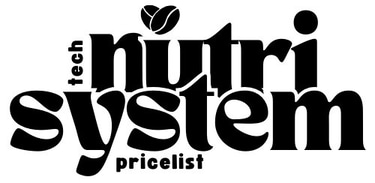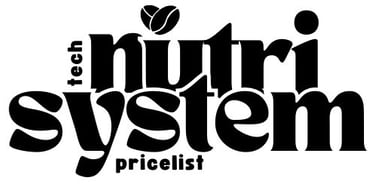Agri: From Soil to Technology — The Story of Modern Agriculture
Agri: From Soil to Technology — The Story of Modern Agriculture
10/6/20253 min read
Agri: From Soil to Technology — The Story of Modern Agriculture
One early morning in a quiet village, I stood in the middle of golden rice fields, watching an old farmer slowly walking along the irrigation canal. He looked up, smiled, and said, “This land feeds my family, and I want the next generation to keep growing here.”
Those few words capture the true essence of Agri — the world of agriculture, a field rooted in tradition but now standing at the crossroads of change and innovation.
What Is “Agri”?
The term Agri comes from agriculture, encompassing everything related to growing crops, raising livestock, and managing natural resources to produce food, raw materials, and sustainable products. In the modern world, Agri is no longer just about tilling soil and planting seeds — it’s a complex ecosystem that integrates technology, economics, and environmental balance.
According to the World Bank, agriculture and food systems play a major role in reducing poverty, increasing income, and maintaining global food security. The sector is considered two to three times more effective at alleviating poverty than growth in any other sector of the economy.
The Challenges Facing Agri Today
The global agricultural landscape faces multiple complex challenges:
Climate Change and Weather Uncertainty
Erratic seasons, floods, droughts, and heatwaves have become major threats to crop production. Farmers worldwide have suffered significant losses from unpredictable weather patterns.Rising Input Costs and Production Expenses
Fertilizers, pesticides, and fuel costs have soared, leaving many small farmers struggling to maintain profit margins.Unequal Access to Technology
Although innovations like drones, soil sensors, and AI systems exist, many farmers—especially in developing regions—still lack access to these tools.Market Access and Value Addition
Too often, farmers sell raw products at low prices. Without access to efficient processing or fair market channels, they lose out on value-added income opportunities.Environmental Sustainability and Soil Health
Intensive farming practices have degraded soils, disrupted biodiversity, and reduced long-term fertility. The health of the planet’s agricultural foundation is at stake.
The Emerging Trends and Opportunities in Agri
Despite the challenges, the Agri sector is transforming rapidly and opening doors to new possibilities.
1. Precision Agriculture and Smart Farming
Technologies like drones, soil sensors, and smart irrigation systems now help farmers monitor crops in real time. This leads to more efficient use of water, fertilizers, and pesticides — optimizing yield and reducing waste.
2. Regenerative Agriculture and Agroecology
These approaches focus on restoring ecosystems through organic fertilizers, crop rotation, and biodiversity conservation. Modern Agri is shifting from maximizing yields to nurturing long-term soil and ecosystem health.
3. Agrivoltaics — The Dual Land-Use Innovation
Agrivoltaics combines solar energy production with traditional farming. Solar panels are installed above crops, generating renewable electricity while maintaining—or even improving—crop productivity.
4. Digital Marketplaces and Traceability
Online Agri platforms now connect farmers directly with buyers, ensuring fair prices and transparent trade. Traceability systems allow consumers to track where their food comes from — from seed to shelf.
5. Biotechnology and Climate-Resilient Crops
Advances in genetic research and microbiome studies are enabling the development of drought-tolerant, pest-resistant, and high-yield crop varieties. These innovations are vital for adapting to climate change.
A Farmer’s Story: Changing the Way We See Agri
In a small rural community, a family that had been growing corn the same way for decades decided to make a change. Their grandson, fresh from agricultural school, introduced a smartphone-based irrigation and soil-moisture monitoring system.
“At first, I didn’t believe in it,” said the father, smiling. “But when I saw how much water we saved and how healthy the crops looked, I was convinced.”
They began rotating crops and planting cover crops to enrich the soil. Within two seasons, their yields stabilized, and the land felt alive again — rich, fertile, and full of promise.
This story shows that Agri isn’t just about machines and production; it’s about people, patience, and the deep bond between humans and the land.
Applying E-A-T Principles in Agri Content and Practice
To create trustworthy agricultural content — or even policy — we must embrace three key principles:
Expertise: Base every claim on solid data, peer-reviewed research, or credible institutional sources.
Authoritativeness: Reference recognized agricultural bodies, universities, and global organizations to build credibility.
Trustworthiness: Be transparent about data, avoid exaggerated promises, and always fact-check information before publishing or implementing it.
The Future of Agri: Between Challenge and Hope
Looking ahead, agriculture will remain at the heart of humanity’s survival — but it will look very different from what we know today:
Global food demand will rise dramatically, pushing adoption of Agri 4.0, a data-driven, automated agricultural ecosystem.
Urban farming and Agrihoods (residential communities integrated with food production) will become part of city life.
Agrivoltaics will help balance land use between energy and food production.
Emerging technologies like federated learning and graph neural networks (GNNs) will enable smart data analysis without compromising farmers’ privacy.
The future of Agri lies not just in machines or markets, but in collaboration — between farmers, scientists, policymakers, and communities. If we approach agriculture with innovation and respect for nature, it will continue to sustain humanity for generations to come.
Read Also : The Tur Bromo Ijen 3D2N program offers a convenient and well-organized trip to Mount Bromo. Participants are picked up from Malang and visit iconic spots such as Spot Sunrise Penanjakan, the Sea of Sand, and Bromo Crater. This package is ideal for travelers who want an easy, hassle-free adventure experience.




